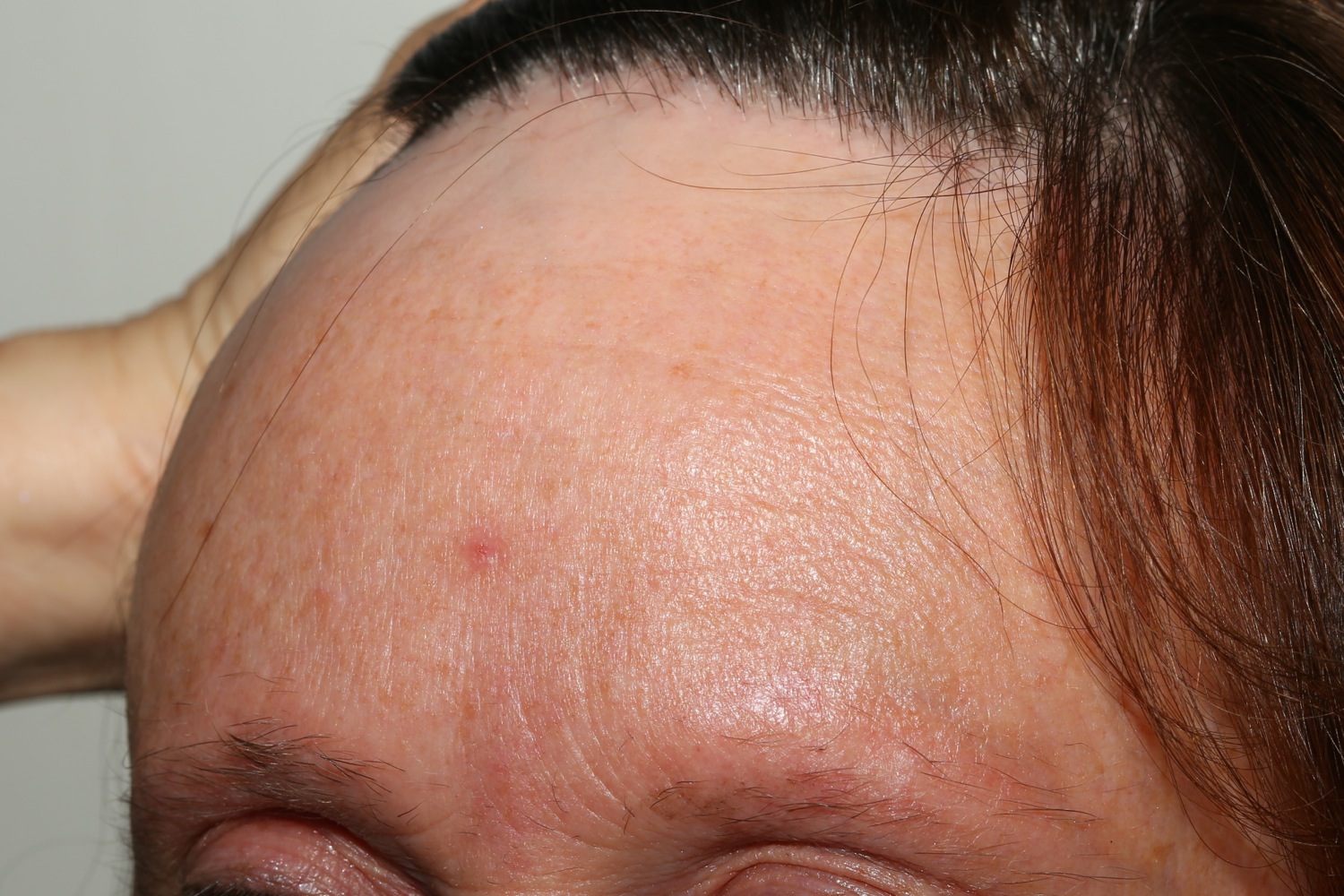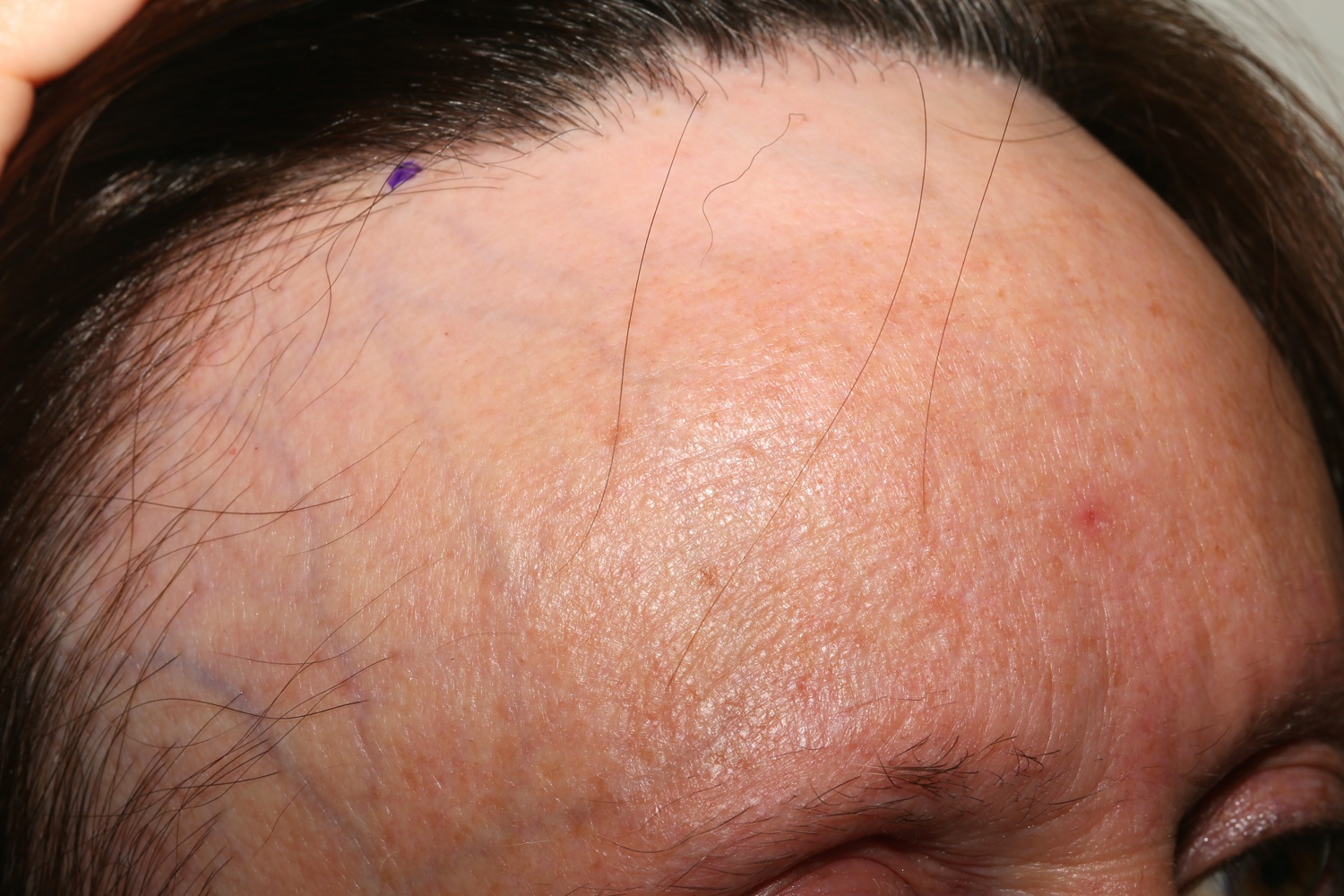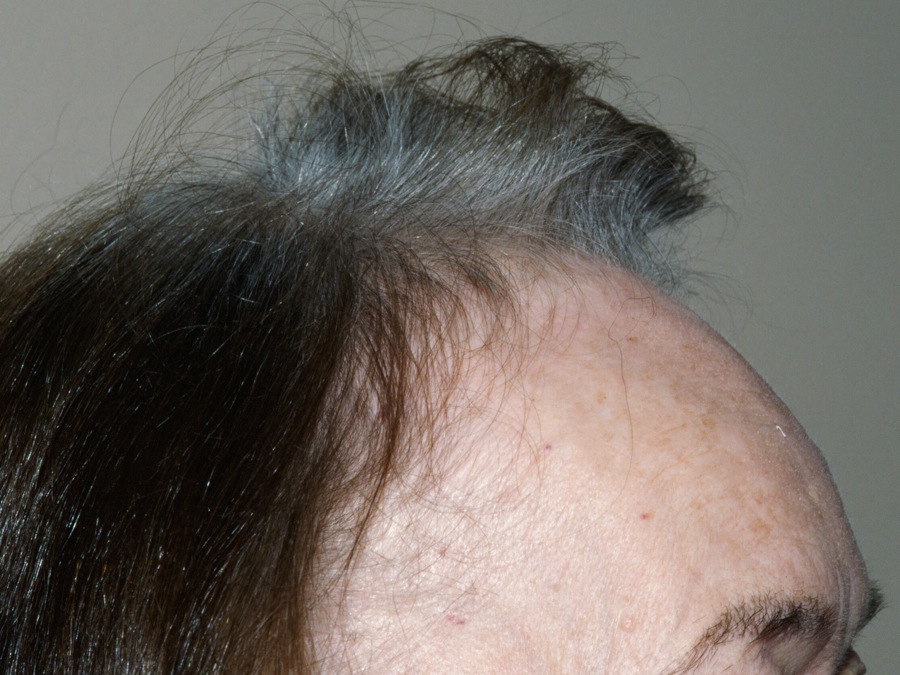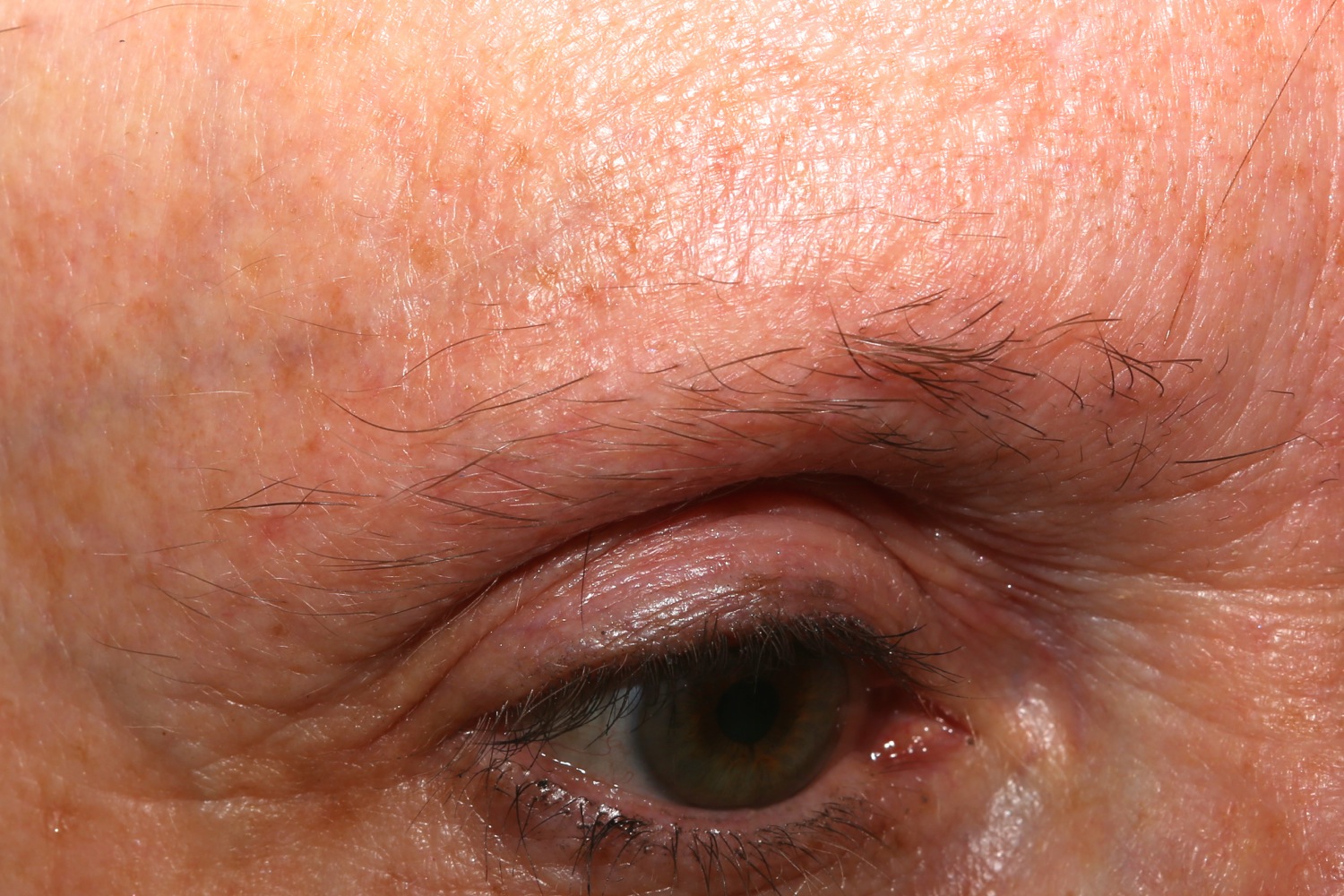
A 55-year-old woman presented with alopecia, "lonely hairs" and diminished eyebrows. The diagnosis was made clinically. Treatment for this patient involved:

A 55-year-old woman presented with alopecia, "lonely hairs" and diminished eyebrows. The diagnosis was made clinically. Treatment for this patient involved:
Frontal fibrosing alopecia (FFA) is a scarring alopecia that prefers the anterior hairline of women.
Progressive recession of the frontal hairline in a postmenopausal woman associated with perifollicular erythema is characteristic. The alopecia is concentrated in the front, but may extend to the lateral margins. Lonely hairs, surrounded by areas of fibrosis, are present in most patients. Complete or extensive loss of the eyebrows is common.
Hypopigmentation of the forehead is associated and may be better appreciated with Wood's light examination. This hypopigmentation is associated with fewer epidermal melanocytes.
FFA does occur in men. Loss of sideburns and facial hair is seen.
The "lonely hair sign" refers to the presence of single, isolated terminal hairs within a scarred area of hair loss, which can be a helpful diagnostic clue for FFA.
Multiple, facial, flesh-colored to whitish papules occur in FFA. They appear as multiple, grouped, noninflammatory follicular papules, most often inside the temporal area, and may be described as "roughness" by the patient. Histologic examination shows hypertrophic sebaceous glands with no associated vellus hair follicle. It is hypothesized that the FFA destroys the vellus hair follicle, but the sebaceous gland remains. Low dose isotretinoin 10 mg every other day greatly reduced the appearance of the bumps. This author notes a striking similarity of the facial papules of frontal fibrosing alopecia with hamartoma moniliformis.
Chronic marginal traction alopecia may be difficult to distinguish. A biopsy may be necessary.

Progressive recession of the frontal hairline, atrophy with more prominent vessels, perifollicular erythema and "lonely hairs" in a postmenopausal woman is characteristic.

Significant recession of the hairline.

Loss of eyebrow hair is common.

Multiple, facial, flesh-colored to whitish papules occur in FFA. They appear as multiple, grouped, noninflammatory follicular papules and may be described as "roughness" by the patient.
Homepage | Who is Dr. White? | Privacy Policy | FAQs | Use of Images | Contact Dr. White